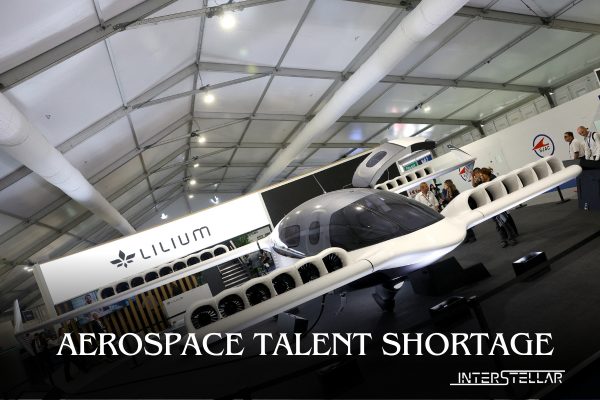Future Engineers Flock to Lilium Jet at Farnborough Airshow
Germany’s Lilium Jet is captivating young engineers and students, sparked by the curiosity of a five-year-old boy.
Lilium Jet Attracts Young Minds
The futuristic flying taxi is among the high-tech projects showcased at the Farnborough Airshow. The event has highlighted the aerospace industry’s urgent need for skilled recruits.
“We hadn’t planned to open the cabin today, but a five-year-old boy asked why he couldn’t board since it takes off vertically. Since then, we’ve had a steady queue of visitors,” said Alex Jordan, head of talent acquisition.
While a career in aviation is a distant dream for the young boy, the industry urgently needs skilled workers to meet demand.
The Aerospace Industry Recruitment Challenge
“Aerospace is always the high frontier. You see things flying, and you want to work for them,” said Jeet Makadia, 27, a recent engineering graduate working on a project at Rolls-Royce.
Despite the enthusiasm at the exhibition, which ended on Friday, solving the sector’s recruitment problem is not immediate. The pandemic has led to significant worker losses, threatening current production and future growth plans.
“There are very few people studying the aerospace industry, leading to a people shortage,” said Tushar Subhash Dhulasawant, 26, a recent graduate interested in control systems and UAV design.
The Aerospace Industry, including Boeing and Airbus, face competition from nimble sectors like artificial intelligence that use many of the same skills.
“You have to assume they will do something different and not stay in one assignment indefinitely,” said Paula Hartley, a senior defence executive at Lockheed Martin.
Addressing the Talent Gap
HQW Precision UK in Plymouth supplies super-precision ball bearings for items like starter generators for planes and directional fins for missiles. The company, previously known as Barden, is transitioning to supply pre-assembled systems, increasing their value.
The key to this transition is the availability of application engineers, who convert customer needs into specific products. “For us to move into this area, which we absolutely have to do, we need more engineers in the future pipeline,” said Mark Wakeham, business development manager.
The aerospace sector faces a broad talent gap. If aerospace were a country, it would have 4.4% unemployment, considered full employment by economists, driving up wages. This talent gap could cost an average-sized aerospace company $300 million to $330 million in lost productivity each year.
Promoting STEM Education
Recruiters believe the solution begins in schools, but it’s not a quick fix. Promoting STEM education, especially for girls and marginalised groups, is crucial.
“It’s not only about promoting the women we have and hiring more women but also ensuring we get more women into the system at the entry level with education,” said Arjan Meijer, CEO of Embraer Commercial Aviation.
Education ministers from the Group of Seven industrialised nations recently voiced concerns about access to STEM teaching, especially for girls and marginalised groups. Kirsten McGuire, who promotes STEM in schools with the British education charity SATRO, emphasised the importance of showcasing opportunities to girls and young women.
Concerns about aviation’s greenhouse gas emissions may deter young entrants. However, the industry has pledged to reduce emissions to net zero by 2050, despite facing allegations of greenwashing.
At the Lilium stand, young pioneers remain undeterred. “I don’t think it will put me off. Nearly every company here is worried about emissions. By the time I become an engineer, there will be many engines I can use in my designs,” said 13-year-old Vincent Liao.
When asked what problem he would most like to solve, he said, “Probably something to do with emissions, a new concept… maybe an idea nobody has thought of to save as much fuel as possible.”





